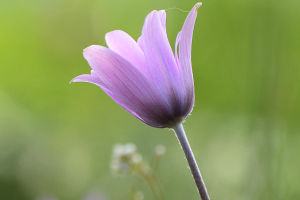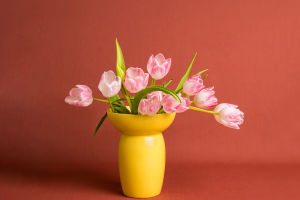Hey Lykkers! Watering plants might seem like the simplest task in gardening, but it’s also the one where most people go wrong.
Too much water? Your plant might drown. Too little? It’ll shrivel up before your eyes. So how do you find the right balance?
Understanding Plant Needs: It’s Not One Size Fits All
Just like humans, plants have different water needs. Some plants, like succulents and cacti, thrive in dry conditions and require minimal water. Others, like ferns and tropical plants, love a humid environment and need frequent watering. Before you start watering, it’s crucial to understand the specific needs of your plant. Look into its native habitat for clues. A plant from a dry, arid region will need far less water than one from a rainforest.
When Should You Water?
The golden rule of watering plants is to water them when they need it, not when it’s convenient for you. To figure out the right time, you can do the simple finger test. Stick your finger about an inch deep into the soil—if it’s dry, it’s time to water.If it remains damp, please wait an additional day or two. Watering at the wrong time can lead to problems like root rot or water stress, so getting the timing right is essential.
Another key tip is to water your plants in the morning. This allows the water to soak into the soil and hydrate the plant before the sun gets too strong. Watering in the evening can sometimes lead to soggy soil that doesn’t dry out, inviting fungal diseases.
The Importance of Soil and Drainage
Not all soil is created equal when it comes to watering. Well-draining soil allows water to pass through and prevents it from sitting around the roots, which can cause rot. On the other hand, heavy, clay-rich soil holds onto water, so plants in this kind of soil will need less frequent watering. If you’re growing plants in pots, make sure they have drainage holes at the bottom to prevent water from pooling.
For indoor plants, consider placing a small tray or saucer under the pot to catch excess water, but don’t let the plant sit in it for too long. After about 30 minutes, empty the tray to avoid the roots staying submerged.
How Much Water is Enough?
It’s all about balance. You want to give your plant enough water to reach the roots, but not so much that it’s swimming in it. As a general rule, water your plants until you see water coming out of the drainage holes at the bottom of the pot. This ensures that the water has penetrated deep enough into the soil.
For outdoor plants, especially in garden beds, slow, deep watering is more effective than a quick sprinkle on the surface. Consider using a watering can with a fine spout or a soaker hose that delivers water slowly and evenly to avoid wasting water and to make sure it gets to the roots.
Avoid Overwatering: A Common Mistake
Excessive watering is among the most frequent causes of plant mortality. Too much water can suffocate the roots, which need oxygen just as much as they need water. Signs of overwatering include yellowing leaves, wilting, and a general unhealthy appearance. If you suspect overwatering, allow the soil to dry out before watering again and ensure that your pots have good drainage.
Consider Climate and Weather
The weather plays a big role in how often you should water your plants. Hot, dry weather will make your plants thirsty, and they’ll need more frequent watering, especially if they’re outdoors. On the flip side, during cooler, rainy months, you might need to cut back on watering to avoid soggy soil. Indoor plants, especially in heated homes, can also dry out faster in winter due to the dry air, so keep an eye on them.
Watering Tools: From Cans to Hose Nozzles
The right tools can make watering easier and more efficient. A watering can with a long spout is perfect for indoor plants and delicate seedlings, allowing you to direct the water exactly where it’s needed. For outdoor plants, a hose with an adjustable nozzle or a soaker hose provides a gentle stream of water, preventing damage to the leaves and soil. Sprinklers are great for larger areas, but avoid wetting the leaves too much to prevent fungal growth.
Watering your plants is all about observation and balance. There’s no one-size-fits-all approach, so it’s important to get to know your plants and their needs. Over time, you’ll learn to recognize the signs of thirst or overwatering, and you’ll develop a watering routine that works for you and your green friends. By employing appropriate techniques, you will ensure that your plants remain healthy, content, and flourishing throughout the entire year.


